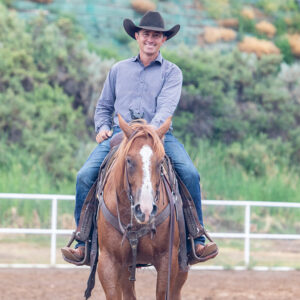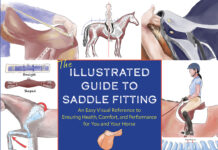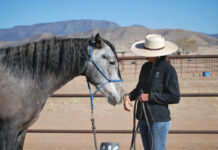A fast-stopping horse sliding into a cloud of dust is an icon for western riding. Horses in reining classes stop with sliders on their back hooves to accentuate downward transitions. In cow horse classes, the horse’s stop blocks the cow’s motion—compounding the action as arena dirt flies.
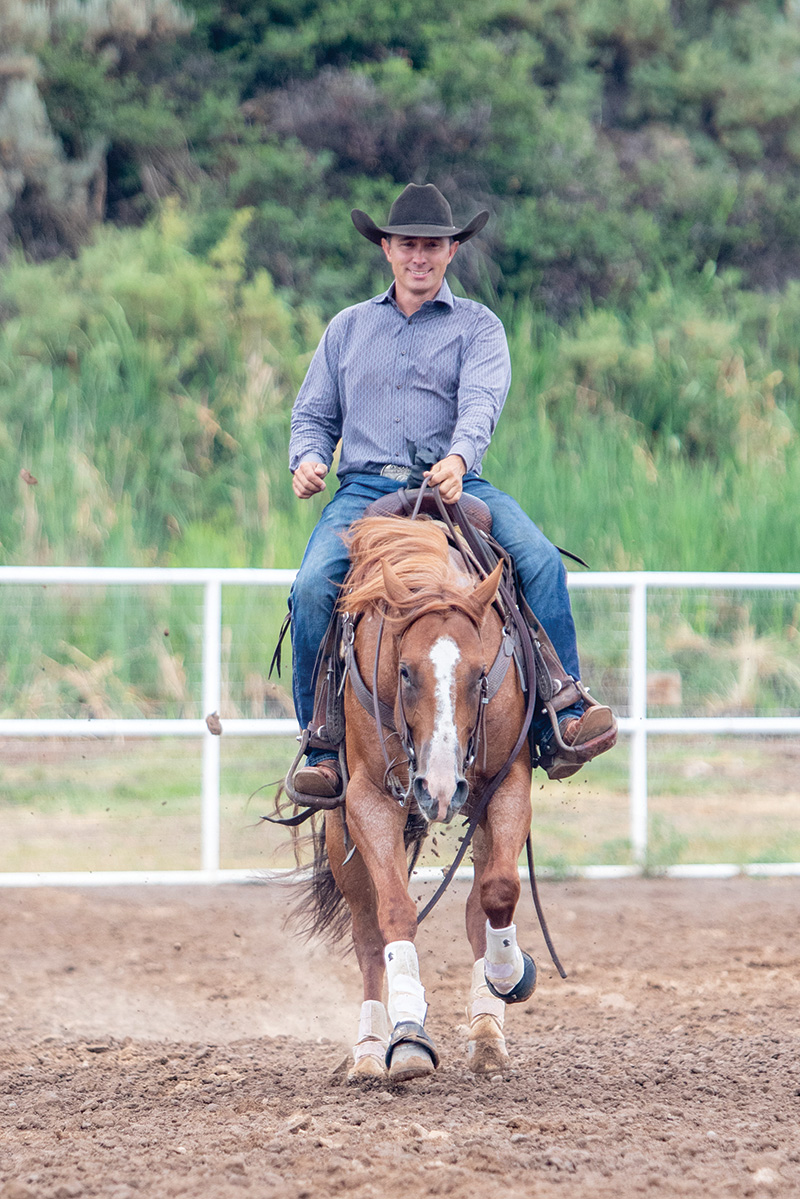
“The best cow horse must be as broke as the best reining horse and as connected to a cow as the best cutting horse,” he says. “Then responsibility falls to the rider. If you use your reins and leg, it must be in time with the objective of the cow.”
The horse must be tuned into the rider for the reining stop cue and tuned into the cow for great cow horse stops.
“For the reining stop, you need to have a great stop, then change directions,” he says. “When you’re working cows, the cattle shift right and left, and you’re always reacting.”
Stopping Time
No matter what type of class you’re preparing for, Ralston recommends keeping your cues consistent. When you visualize how to move your hands to rein for the stops, keep in mind the clock image from part 1 of this series.
With the clock face over your horse’s body—and 12 o’clock at his ears—you’ll move your hands toward 6 o’clock to cue for a stop. You’ll then return your hand to the middle of the clock to allow your horse to move his neck freely without a tight rein.
The Reining Stop
For the perfect reining stop, the horse’s back should hunch into the stop while his hind hooves reach toward the front hooves. The horse’s front legs should move freely as the horse skates into the stop.
The horse’s neck naturally telescopes out and down to counterbalance his weight going down in the back. There will be a nice arc from the nose to the hind end. Ralston warns that you don’t want a lot of rein or bit contact—little to none.
To put this scene into action, Ralston says he approaches the stop with gradually building speed. As the horse runs down to the stop, his body position naturally changes, and his shoulders move back with the motion.
When you’re ready to stop, make sure not to force your shoulders back. Instead, the way the horse moves should send your shoulders back—just like a jet taking off propels passengers back into their seats. This relaxed, natural back position means that the horse is moving his shoulders freely without weight tipping forward onto his front legs.
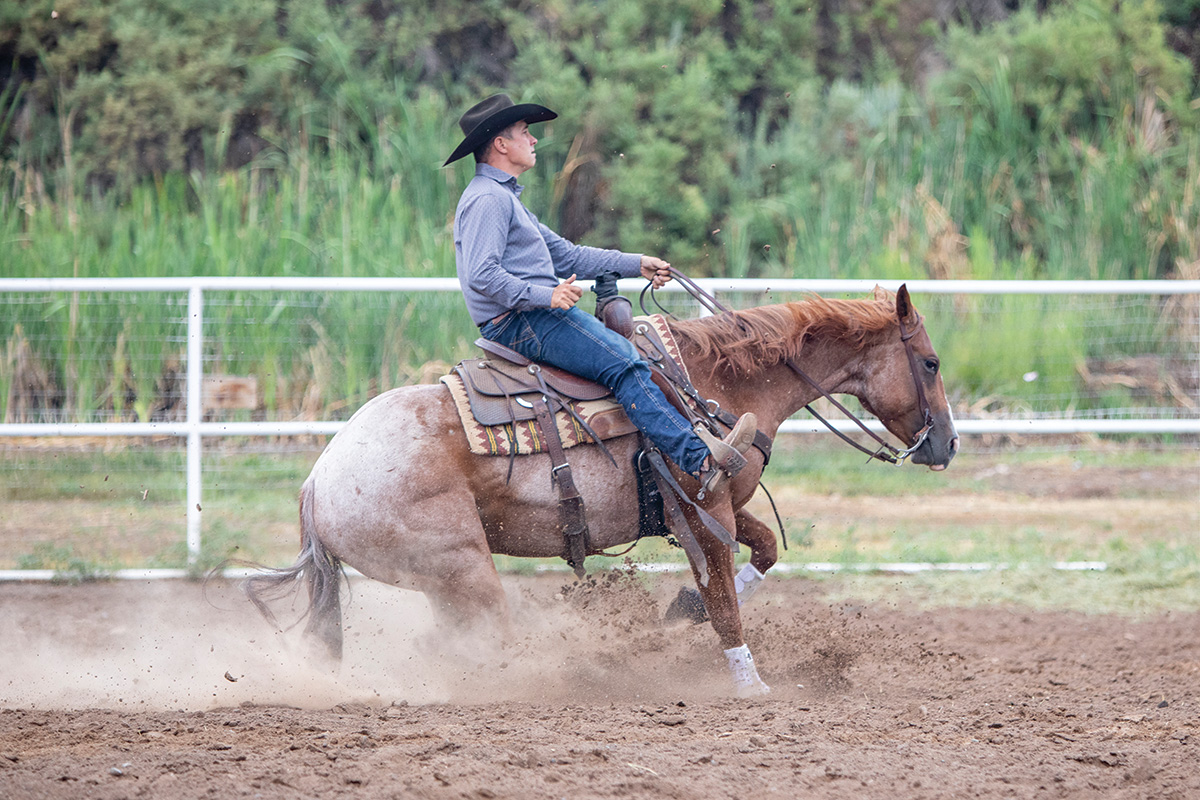
When it’s time to ask for the stop, say “whoa,” press the balls of your feet into your stirrups, drive your heels, then lift your hand for light contact. As you sit the stop, point your belt buckle to the sky and keep your chin up.
The reining stop was developed for the arena-performance class. Reining crowds cheer the loudest when horses glide over a long distance. This stop isn’t used to work on the ranch. However, the horse’s free movement and willingness to change speeds on command are always essential.
Cow Horse Stop
For a cow horse stop, the horse’s front end doesn’t pedal to balance the hindquarters’ sliding. Instead, the horse’s front legs move more abruptly to allow him to change directions when the cow turns.
“If the cow and horse move down the fence then stop at the same time, the horse would keep moving down the fence while the cow changed directions and got away,” Ralston says. “The reining stop with sliders is not practical for working cows.”
Ralston says that for a well-trained horse, the easiest way to change from a reining stop to the stop needed for cattle work is to change the shoes. Ralston chooses back shoes for cattle work that allow the horse to move through the footing with his hind hooves but that have more friction than those that allow for a sliding stop.
To stop for a cow horse class, position your body just as when stopping in a reining class. While the horse will move differently, your position remains the same. As you move with the cow down the fence, you want your shoulder, hip, and heel to align.
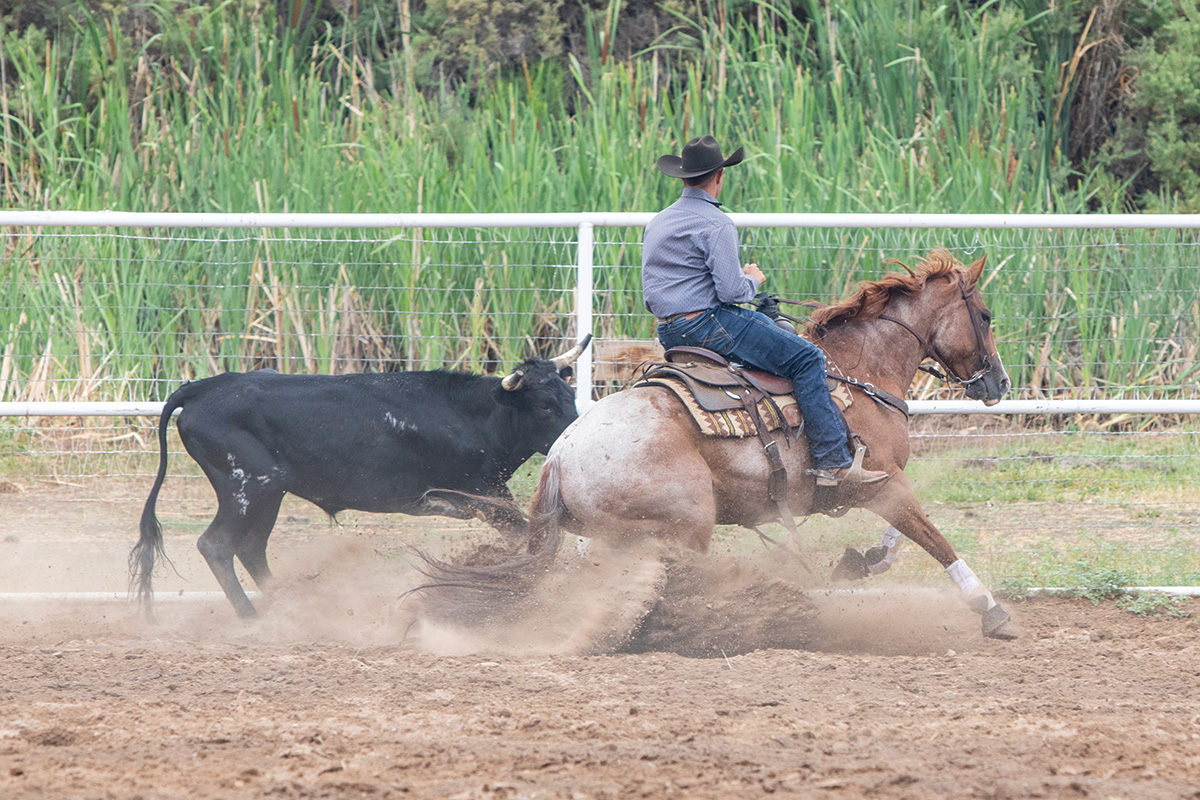
The trained horse will speed to take you to the spot that will stop the cow. The momentum of the horse should naturally move your shoulders behind your hips. With your shoulders back, you’ll be balanced for the stop.
Note that in either stop, your body position should be relaxed with your shoulders back. If you lean forward on a cow turn, you can get thrown forward while the horse tries to change direction. In that case, the horse has all your weight on his front end—making his job difficult. Instead, keep your shoulders slightly back to be ready for any western stop.
Meet the Trainer |
This article appeared in the November/December 2022 issue of Horse Illustrated magazine. Read the first installment of this series, demonstrating the difference in turns between reining and cow horse classes.

